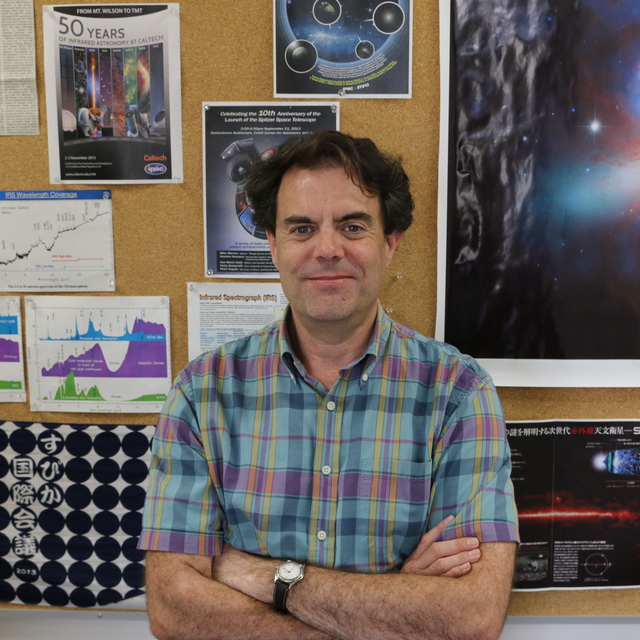November
2013
•
2013ApJ...777..156I
Authors
•
Inami, H.
•
Armus, L.
•
Charmandaris, V.
•
Groves, B.
•
Kewley, L.
•
Petric, A.
•
Stierwalt, S.
•
Díaz-Santos, T.
•
Surace, J.
•
Rich, J.
•
Haan, S.
•
Howell, J.
•
Evans, A. S.
•
Mazzarella, J.
•
Marshall, J.
•
Appleton, P.
•
Lord, S.
•
Spoon, H.
•
Frayer, D.
•
Matsuhara, H.
•
Veilleux, S.
Abstract
•
We present the data and our analysis of mid-infrared atomic fine-structure emission lines detected in Spitzer/Infrared Spectrograph high-resolution spectra of 202 local Luminous Infrared Galaxies (LIRGs) observed as part of the Great Observatories All-sky LIRG Survey (GOALS). We readily detect emission lines of [S IV], [Ne II], [Ne V], [Ne III], [S III]18.7 μm, [O IV], [Fe II], [S III]33.5 μm, and [Si II]. More than 75% of these galaxies are classified as starburst-dominated sources in the mid-infrared, based on the [Ne V]/[Ne II] line flux ratios and equivalent width of the 6.2 μm polycyclic aromatic hydrocarbon feature. We compare ratios of the emission-line fluxes to those predicted from stellar photo-ionization and shock-ionization models to constrain the physical and chemical properties of the gas in the starburst LIRG nuclei. Comparing the [S IV]/[Ne II] and [Ne III]/[Ne II] line ratios to the Starburst99-Mappings III models with an instantaneous burst history, the emission-line ratios suggest that the nuclear starbursts in our LIRGs have ages of 1-4.5 Myr, metallicities of 1-2 Z ⊙, and ionization parameters of 2-8 × 107 cm s-1. Based on the [S III]33.5 μm/[S III]18.7 μm ratios, the electron density in LIRG nuclei is typically one to a few hundred cm-3, with a median electron density of ~300 cm-3, for those sources above the low density limit for these lines. We also find that strong shocks are likely present in 10 starburst-dominated sources of our sample. A significant fraction of the GOALS sources (80) have resolved neon emission-line profiles (FWHM >=600 km s-1) and five show clear differences in the velocities of the [Ne III] or [Ne V] emission lines, relative to [Ne II], of more than 200 km s-1. Furthermore, six starburst and five active galactic nucleus dominated LIRGs show a clear trend of increasing line width with ionization potential, suggesting the possibility of a compact energy source and stratified interstellar medium in their nuclei. We confirm a strong correlation between the sum of the [Ne II]12.8 μm and [Ne III]15.5 μm emission, as well as [S III]33.5 μm, with both the infrared luminosity and the 24 μm warm dust emission measured from the spectra, consistent with all three lines tracing ongoing star formation. Finally, we find no correlation between the hardness of the radiation field or the emission-line width and the ratio of the total infrared to 8 μm emission (IR8), a measure of the strength of the starburst and the distance of the LIRGs from the star-forming main sequence. This may be a function of the fact that the infrared luminosity and the mid-infrared fine-structure lines are sensitive to different timescales over the starburst, or that IR8 is more sensitive to the geometry of the region emitting the warm dust than the radiation field producing the H II region emission.
Links





